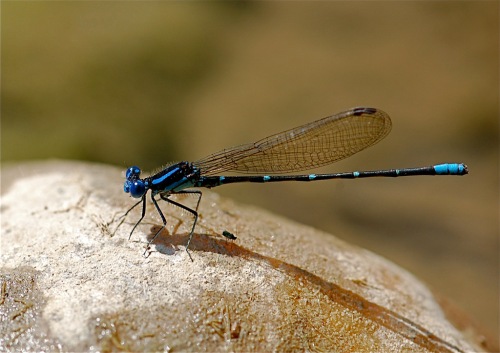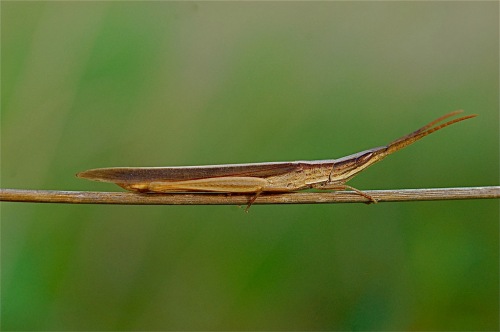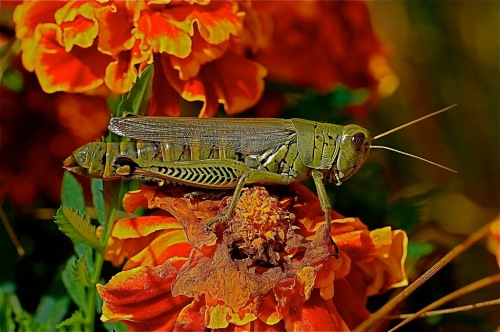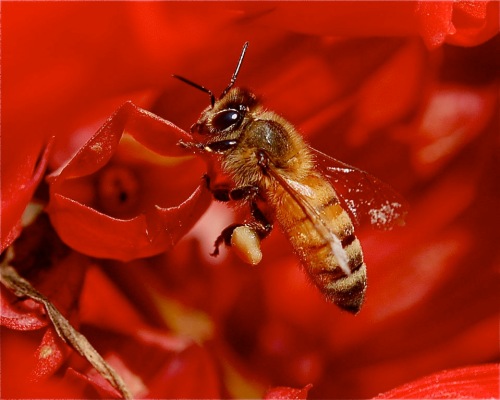
Sam Comfort explains the construction and utility of a top bar hive. Click/double click image to enlarge.
Top bar hive expert Sam Comfort (http://anarchyapiaries.org/) held a workshop at the Second Nature Teaching Apiary in Urbana, IL on Aug. 8, 2013. During the first hour and a half he introduced a number of issues honey bees encounter and showed us how top bar hives are constructed. He also introduced the utility of the smaller Warre hives.
At that point Second Nature owner, Maggie Wachter, received a phone call regarding one of her hives swarming at an organic produce farm north of Mahomet, IL. We promptly agreed to drive there to get some hands-on experience in handling and re-hiving a swarm. The swarm was clustered about three feet above the ground on a peach tree. This proved perfect for observation, photographing and rehousing.


















